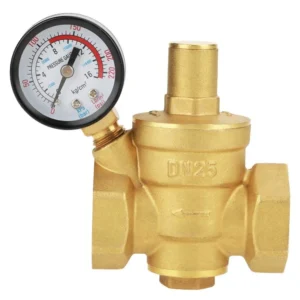Water pressure regulators are crucial in maintaining optimal water flow and pressure within a plumbing system. However, when these regulators malfunction or encounter issues, they can produce disruptive noises that can be annoying and concerning for homeowners.
In this comprehensive guide, we’ll dive into the causes, symptoms, diagnosis, and solutions for water pressure regulator noise, helping you address this common plumbing issue effectively.
What is Water Pressure Regulator
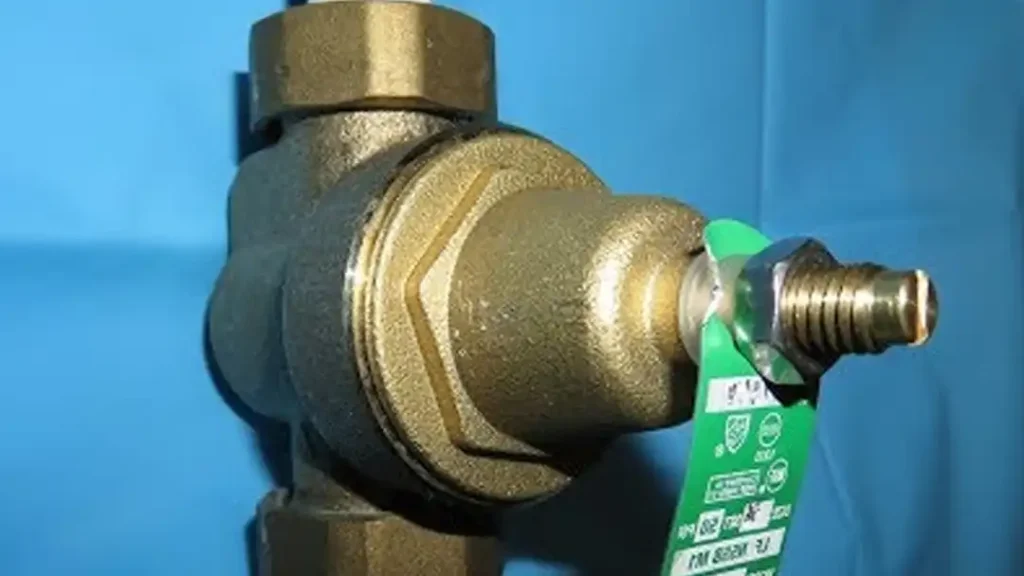
A water pressure regulator is a plumbing device designed to control and maintain the water pressure within a plumbing system. It serves as a barrier between the municipal water supply or well pump and the internal plumbing of a home or building.
The primary function of a water pressure regulator is to reduce the incoming water pressure to a safe and consistent level, ensuring that it doesn’t exceed the capacity of the pipes, fixtures, and appliances within the property.
Types of Water Pressure Regulator
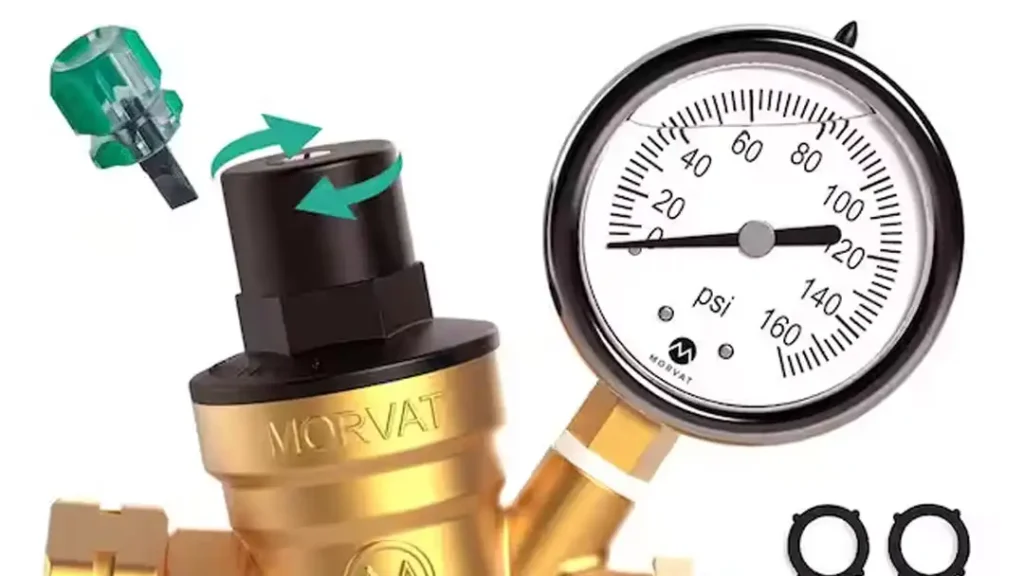
There are several types of water pressure regulators available, each designed to suit different plumbing systems and applications.
Here are some common types:
Single-Stage Water Pressure Regulator:
Description: This type of regulator operates using a single valve mechanism to reduce incoming water pressure to a predetermined level.
Suitability: Ideal for residential homes and small commercial properties with relatively consistent water pressure requirements.
Dual-Stage Water Pressure Regulator:
Description: Dual-stage regulators feature two separate valve mechanisms for more precise pressure control. They can handle fluctuations in water pressure more effectively.
Suitability: Recommended for properties with fluctuating water pressure or those requiring precise pressure adjustment, such as large residential complexes or industrial facilities.
Adjustable Water Pressure Regulator:
Description: Adjustable regulators allow users to manually adjust the desired water pressure setting using a screw or knob. They offer flexibility in fine-tuning the pressure to meet specific needs.
Suitability: Suitable for properties where water pressure requirements may vary, or for users who prefer customized pressure settings.
Preset Water Pressure Regulator:
Description: Preset regulators come with a fixed pressure setting that cannot be adjusted by the user. They offer simplicity and reliability, with no need for manual adjustments.
Suitability: Commonly used in residential applications where a consistent water pressure level is sufficient, and no customization is needed.
Brass Water Pressure Regulator:
Description: Brass regulators are constructed from durable brass materials, offering superior corrosion resistance and longevity compared to other materials.
Suitability: Recommended for properties with corrosive water conditions or those requiring long-term durability.
Stainless Steel Water Pressure Regulator:
Description: Stainless steel regulators are highly resistant to corrosion and chemical damage, making them suitable for harsh environments or industrial applications.
Suitability: Ideal for properties with aggressive water conditions or where hygiene and sanitation are paramount.
Compact Water Pressure Regulator:
Description: Compact regulators are designed for space-constrained installations, featuring a smaller footprint without compromising performance.
Suitability: Suitable for installations where space is limited, such as in tight plumbing enclosures or RVs.
High-Flow Water Pressure Regulator:
Description: High-flow regulators are capable of handling larger volumes of water flow without sacrificing pressure control. They are suitable for properties with high-demand water usage.
Suitability: Recommended for properties with multiple bathrooms, irrigation systems, or commercial applications where high water flow rates are common.
Understanding the different types of water pressure regulators allows homeowners and property managers to select the most suitable option based on their specific requirements and preferences.
Why Do Water Pressure Regulators Make Noise
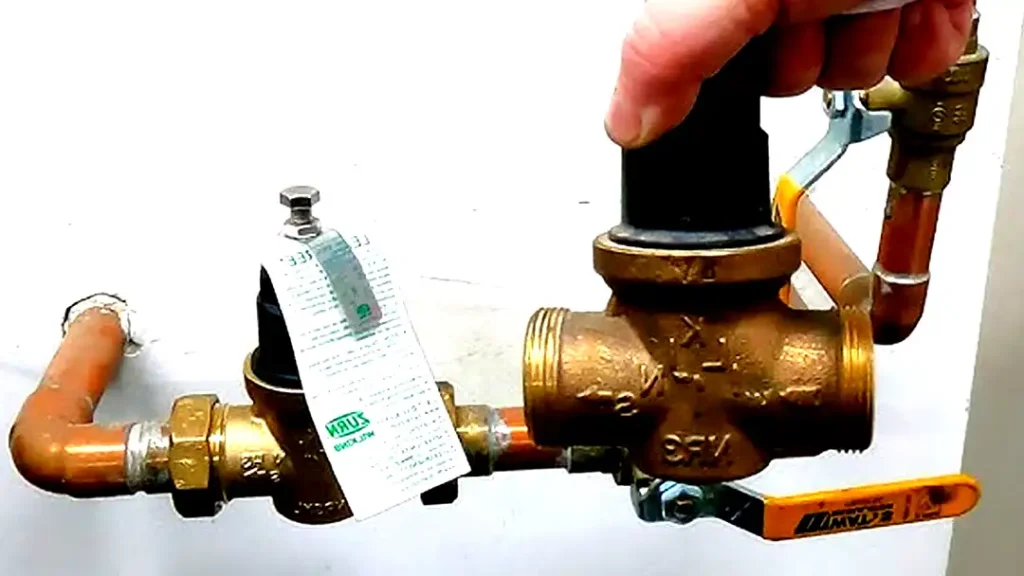
Water pressure regulators can create noise for a number of reasons, often due to mechanical issues or the behavior of water flowing through them. The sounds, which can range from a humming or whistling to a banging or moaning, are typically signs of a problem.
A regulator’s internal components, such as a worn-out diaphragm or spring, can vibrate as water passes through, causing a humming or buzzing noise. Additionally, the presence of sediment, mineral deposits, or other debris can obstruct the flow of water, leading to turbulence and a high-pitched whistling or squealing sound. In more severe cases, a sudden change in water flow can create a hydraulic shockwave known as a “water hammer,” which results in a loud banging sound.
- Improper Sizing or Installation: A regulator that is too small for the household’s water flow or one that is not properly secured can also cause rattling or other noises.
- Vibrating Components: Worn or loose internal parts like the diaphragm or spring can vibrate as water flows, leading to humming or chattering noises.
- Debris or Sediment Buildup: Accumulation of mineral deposits or debris inside the valve can restrict the water flow, causing turbulence that produces whistling or squealing sounds.
- Water Hammer: Abruptly turning off a faucet can cause a sudden stop in water flow, creating a shockwave that bangs against the pipes and the regulator itself.
Moaning Noises From a Water Pressure Regulator
Moaning noises from a water pressure regulator can be unsettling and indicate underlying issues within the plumbing system.
Here are some possible reasons why a water pressure regulator might produce moaning noises:
- Sediment Accumulation: If sediment or debris has built up inside the water pressure regulator or the pipes connected to it, it can disrupt the flow of water and lead to turbulent conditions. This turbulence can cause the regulator to emit moaning or groaning sounds as water passes through.
- Restricted Water Flow: A partial blockage or restriction in the water supply line can create irregular flow patterns, resulting in pressure fluctuations and noise. The water pressure regulator may moan as it struggles to maintain a steady flow despite the obstruction.
- Faulty Diaphragm: The diaphragm inside the water pressure regulator is responsible for regulating water flow and pressure. If the diaphragm is damaged, worn out, or improperly seated, it may vibrate or flutter, producing moaning noises in the process.
- High Water Pressure: Excessive water pressure entering the regulator can overload its capacity and cause it to operate under strain. The moaning noises could indicate that the regulator is struggling to manage the elevated pressure levels effectively.
- Air in the System: Air trapped within the plumbing system can create pockets of turbulence when water flows through, leading to noise issues. Bleeding air from the system or ensuring proper air chamber installation can help alleviate this problem.
- Corrosion or Wear: Corrosion or wear on internal components of the water pressure regulator, such as springs or seals, can compromise its functionality and result in noise generation. Moaning noises may be a sign of deteriorating parts needing replacement.
- Temperature Fluctuations: Drastic temperature changes in the water supply can cause expansion and contraction of pipes, fittings, and regulator components. These thermal fluctuations can induce stress on the regulator, leading to moaning sounds.
- Hydraulic Shock: Rapid changes in water flow or pressure, known as hydraulic shock or water hammer, can occur when valves are suddenly opened or closed. The resulting shock waves can reverberate through the plumbing system, causing moaning noises from the regulator.
Addressing moaning noises from a water pressure regulator often requires diagnosing the underlying cause and taking appropriate corrective action. Consulting a licensed plumber to inspect the system thoroughly can help identify and resolve the issue effectively. Regular maintenance and proactive measures can also prevent moaning noises and ensure the smooth operation of the plumbing system.
How to Identify a Bad Water Pressure Regulator
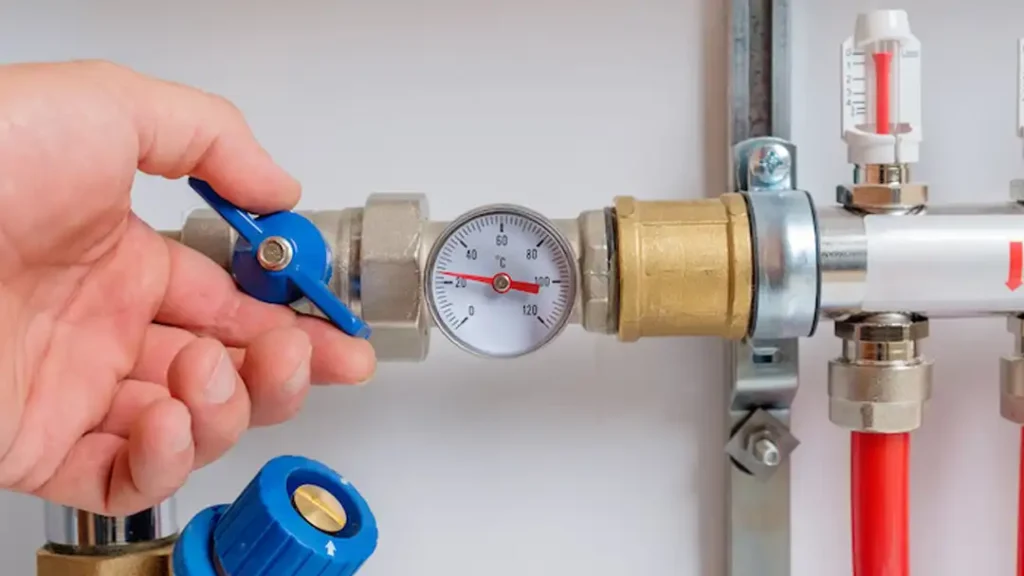
The signs of a bad water pressure regulator can vary, but they often indicate that the device is no longer effectively controlling the pressure of water entering your home. A failing regulator can cause a variety of plumbing issues, from minor annoyances to significant damage.
Here are the most common signs that your water pressure regulator may be failing:
- Fluctuating Water Pressure: This is one of the most common indicators. If you notice that the water pressure in your faucets or shower suddenly changes from strong to weak, or vice versa, it may be a sign of a malfunctioning regulator.
- Water Hammer or Noisy Pipes: A loud banging, hammering, or rattling sound in your pipes, known as “water hammer,” often occurs when faucets or appliances are turned on or off. This is caused by high, unregulated water pressure, which a faulty regulator fails to control.
- High Water Pressure: If you notice that the water is coming out of your faucets with excessive force, your regulator may not be reducing the pressure from the municipal supply to a safe level (typically between 40-60 psi). High pressure can damage appliances, fixtures, and pipes, leading to leaks.
- Leaks: Leaky faucets, running toilets, or even leaks in your water heater or appliances can be a symptom of a bad regulator. The excess pressure puts a strain on seals, gaskets, and other components, causing them to fail prematurely.
- Regulator Leaking: If you can locate the regulator (it’s often a bell-shaped device near your main water shut-off valve), a visible leak around the regulator itself is a clear sign that it needs to be replaced.
A water pressure regulator can fail due to age, wear and tear, or sediment buildup inside the valve. Most regulators have a lifespan of 10 to 15 years.
This video provides information on how to test a water pressure regulator.
Water Pressure Regulator Noise Causes and Risk Factors
A water pressure regulator can become noisy for several reasons, which typically indicate a problem with the device itself or the overall plumbing system. Understanding the causes and the associated risks is crucial for preventing costly damage to your home.
🔊 Causes of Water Pressure Regulator Noise
The sounds you hear are a direct result of the regulator’s internal components struggling to function correctly.
- Vibrating Components: Over time, the internal diaphragm, spring, or valve seat can become worn or loose. As water flows through the regulator, these components may vibrate or rattle, creating a humming, buzzing, or chattering sound. This often happens as the regulator attempts to maintain a consistent pressure level.
- Debris or Sediment Buildup: Hard water minerals and other debris can accumulate inside the regulator, restricting the flow of water. This creates turbulence, leading to a high-pitched whistling or squealing sound.
- Water Hammer: One of the most common and dramatic noises is a loud banging or thumping. This “water hammer” effect occurs when a high-pressure flow of water is suddenly stopped by a closing valve (e.g., a faucet or washing machine). A malfunctioning regulator fails to absorb this shockwave, causing it to reverberate through the pipes.
- Improper Sizing or Installation: If a regulator is too small for the household’s water demand or is not securely fastened to the pipe, it can rattle, shake, or create other loud noises as water flows through it.
⚠️ Risk Factors of a Failing Regulator
A noisy or failing water pressure regulator is more than just an annoyance; it’s a warning sign of potential damage to your plumbing system and appliances.
- Pipe and Fixture Damage: A regulator that fails to reduce high water pressure puts excessive strain on your pipes, fixtures, and joints. This constant stress can lead to weakened connections, premature corrosion, and eventually, leaks or burst pipes, which can cause significant water damage.
- Appliance Damage: Household appliances that use water, such as dishwashers, washing machines, and water heaters, are designed to operate within a specific pressure range (typically 40-60 psi). A failing regulator can cause high pressure that shortens the lifespan of these expensive appliances by damaging internal components and seals.
- Increased Water Bills: Unregulated high pressure can lead to subtle leaks that go unnoticed, constantly running toilets, and increased water usage from faucets, all of which result in a higher-than-normal water bill.
- Inconsistent Water Flow: A bad regulator can cause water pressure to fluctuate wildly from one moment to the next. You might experience a strong spray from the faucet, followed by a trickle, which can be frustrating and make it difficult to use water-using fixtures and appliances.
How to Reduce Water Pressure Regulator Noise
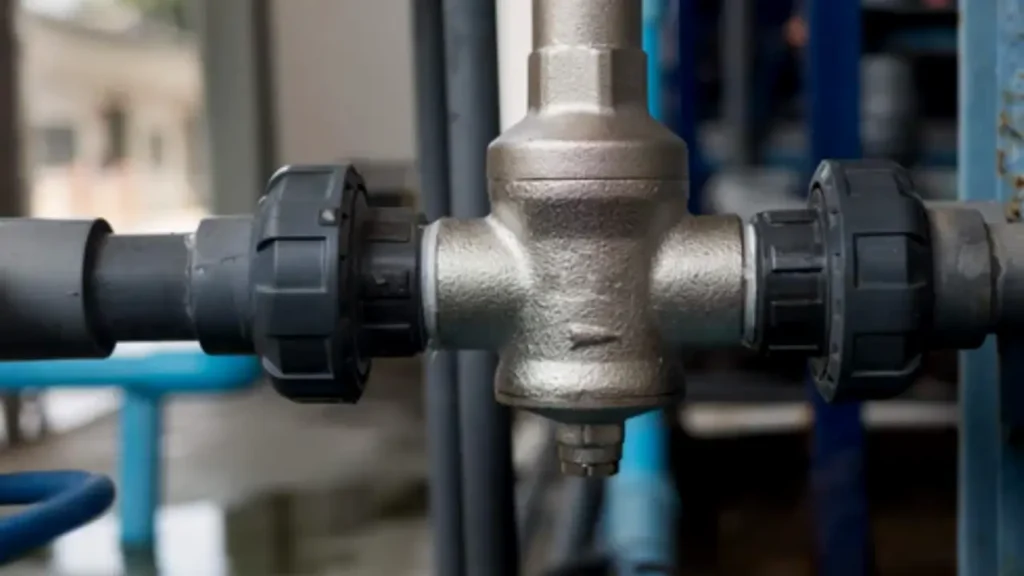
Addressing noise from a water pressure regulator (PRV) often involves identifying the source, which can range from internal vibrations to excessive pressure or debris. The humming, squealing, or chattering sound indicates the valve is struggling to manage the water flow effectively, requiring adjustment, cleaning, or a potential replacement to restore quiet operation.
- djust the Pressure Setting on the PRV Humming noise is often caused by the regulator valve diaphragm vibrating under certain flow conditions, which can sometimes be corrected by slightly adjusting the output pressure. Try carefully raising or lowering the pressure setting by about 5 to 10 PSI; this change in tension might eliminate the harmonic vibration and restore quiet operation, preventing future noise issues.
- Check for and Flush Out Debris Small particles like sediment or mineral scale can get lodged inside the regulator valve seat, causing turbulence in the water flow that results in whistling or squealing noises. Running water through the regulator for a few minutes might flush out minor debris, but for stubborn clogs, you might need to disassemble the regulator’s cartridge for a proper cleaning or replacement.
- Install Water Hammer Arrestors If the noise is a sudden, loud banging or knocking (known as water hammer) that occurs when faucets or appliances shut off quickly, it’s caused by pressure shock waves. Installing water hammer arrestors near the noisy fixtures or in the main lines provides an air cushion that absorbs the shock, significantly reducing the impact and subsequent noise.
- Insulate the Regulator and Pipes In cases where the noise is subtle but still irritating, sound-deadening material can be wrapped around the PRV itself and the adjacent piping to absorb vibration and block the sound transmission. Use dense foam insulation or specialized acoustic wrapping designed for plumbing to effectively dampen the humming sound and improve household quietness.
- Inspect or Replace the Regulator A regulator that is improperly sized for the home’s water demand or has worn-out internal components, like a damaged spring or diaphragm, will often be inherently noisy. If adjustments and cleaning fail to resolve the issue, the PRV may need to be replaced with a new, appropriately sized model for dependable, quiet pressure regulation.
Water Pressure Regulator Noise Diagnosis and Tests
Diagnosing a noisy water pressure regulator involves identifying the type of sound and then performing a simple pressure test to confirm its function. The noise itself is a valuable clue to the underlying issue.
👂 What the Noise Means
- Humming or Buzzing: This typically indicates a problem with the regulator’s internal components. A loose or worn-out diaphragm or spring can vibrate as water flows, creating a continuous, low-frequency sound. This suggests the regulator is aging and may need to be replaced.
- Whistling or Squealing: A high-pitched noise usually points to a restriction in the water flow. This can be caused by sediment or mineral buildup (a common problem in hard water areas) clogging the regulator’s internal components. The water is forced through a smaller-than-intended opening, leading to a loud whistling sound.
- Banging or Hammering: This is the most alarming sound and is known as “water hammer.” It occurs when water is shut off abruptly at a faucet or appliance (like a washing machine). A functional regulator should absorb this sudden pressure change, but a faulty one won’t. The resulting shockwave travels through the pipes, causing them to bang against their supports or each other. This is a clear sign that the regulator is not doing its job.
🛠️ How to Test the Regulator
The most reliable way to confirm a bad water pressure regulator is to test the water pressure directly.
- Get a Pressure Gauge: Purchase an inexpensive pressure gauge with a hose bib connection from a hardware store.
- Turn Off Water: Ensure all faucets, appliances, and any other water-using devices in your home are turned off to get an accurate reading.
- Connect and Test: Attach the gauge to an outdoor faucet (hose bib), preferably one closest to where the main water line enters your home. Tighten it by hand, then turn the faucet on all the way.
- Read the Gauge: Read the pressure measurement on the gauge. A healthy water pressure reading for most residential plumbing systems should fall between 40 and 60 psi. If the reading is consistently above 80 psi or wildly inconsistent, your regulator is likely failing.
If the gauge shows high or fluctuating pressure, and you’ve been hearing one of the noises described above, it’s a strong indication that the regulator needs to be repaired or replaced by a qualified plumber.
Conclusion
A noisy water pressure regulator is a clear warning sign of a problem within your home’s plumbing. Whether it’s a hum, a whistle, or a loud bang, these sounds indicate that the regulator is failing to properly manage water pressure. Ignoring this issue can lead to costly damage to your pipes, appliances, and fixtures, making a swift diagnosis and repair essential for protecting your home.
If you are a professional seeking a reliable solution, a faulty regulator can compromise the integrity of your work. Ensure your projects are built to last with high-quality components. Contact us today for wholesale pricing on water pressure regulators and secure the quiet, efficient plumbing solutions you need.

